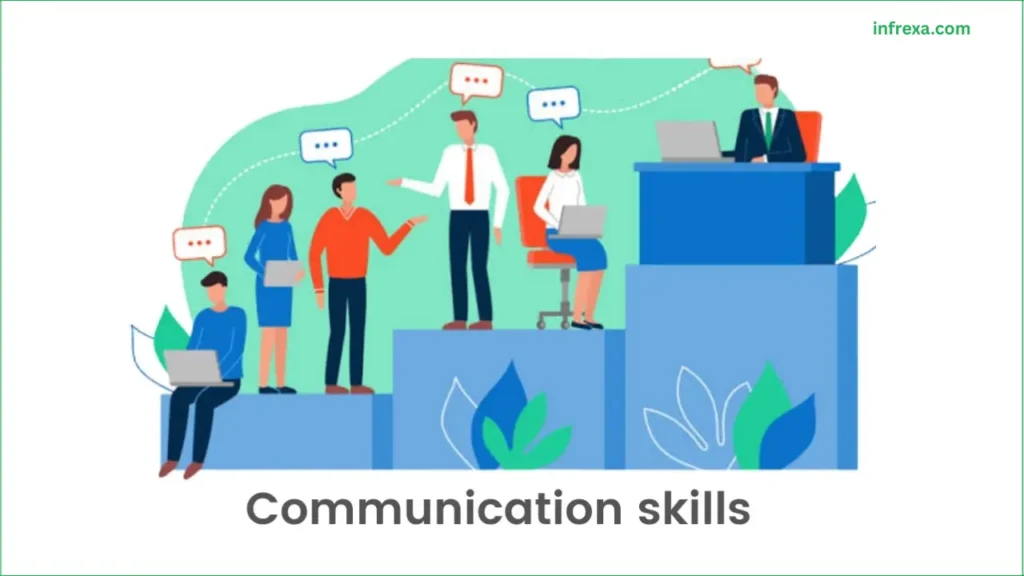Did you know that the average professional spends over 80% of their working hours communicating in some form? Despite this, most of us were never formally taught how to communicate effectively. We confuse knowing the words with knowing the skill. The ability to clearly influence, understand, and connect with another person is an art that shapes your entire professional personality.
This understanding didn’t come from a textbook; it’s a reality proven by managing high-stakes teams and navigating difficult negotiations. The single biggest difference between a competent professional and a true leader is not raw intelligence, but the ability to articulate complex ideas simply, ensuring the message lands exactly as intended. It is essential for building trust and influence – the fundamental drivers of professional advancement.
The Foundational Skill
Communication is not a monologue; it is an exchange. The provided content often miscategorizes Listening as just another type of communication, but this misses the point entirely. Listening is the Foundational Skill that dictates the success of all other modes. If you don’t listen well, you will fail to understand the context, the goal, or the person you’re speaking to, and the entire communication effort is compromised from the start.
An effective communicator focuses on Active Listening, which involves three distinct steps: hearing, understanding, and responding. You dedicate your full attention to the speaker, and you consciously show it. This practice includes maintaining non-aggressive eye contact and using open posture (no crossed arms), which signals respect. This approach is supported by research from Harvard Business Review on what makes active listening so effective in professional settings.
The strategic use of The Pause is also critical: allowing a two-second silence after the speaker finishes ensures they are completely done and prevents you from formulating your response while they are still speaking, a common mistake that shuts down communication flow. Finally, you paraphrase the core idea back to the speaker in your own words – “So, what I hear you saying is that the deadline is flexible, but the budget is fixed. Is that correct?” – which eliminates confusion immediately and validates the speaker’s message.
The Four Modes of Communication
Every message is transmitted through one of four primary modes. To be effective, you must ensure the message remains consistent and effective across all channels.
1. Non-Verbal Communication
This includes posture, facial expression, and body language. The most profound lesson I learned is that when your words and body conflict, the listener trusts your body every time. This is backed by decades of psychological research on body language and non-verbal cues, often summarized by the 7-38-55 Rule, which suggests that the vast majority of a message’s impact comes from non-verbal elements and tone, not just the words themselves. Your goal must always be congruence – your verbal message must match your non-verbal cues. If a manager verbally says, “I hear your concerns about the project,” while sighing and checking their phone, the listener receives a message of dismissal, regardless of the words. Non-verbal signals are also how you read the room, allowing you to gauge engagement and adjust your approach instantly if someone is leaning away or fidgeting.
2. Verbal Communication
This is interaction through the spoken word. Verbal communication is powerful because it is immediate and allows for instant feedback. What you say is often less important than how you say it; a warm, confident tone is far more persuasive than nervous muttering. To ensure your spoken points are concise, authoritative, and memorable, I teach the PREP Method (Point, Reason, Example, Point). You start with your Point, provide the Reason for it, give a concrete Example to prove it, and then restate the original Point for closure. This simple structure eliminates filler words (“like,” “um”) and ensures every statement is clear and focused.
3. Written Communication
This is one of the most powerful and permanent modes, governing everything from official emails and reports to contracts. Because written messages lack the context of tone, every word carries immense weight. Before sending any official communication, I run it through the 3 C’s Framework: Clear, Concise, and Correct. Use the active voice (e.g., “The team submitted the report,” not “The report was submitted by the team”) to keep sentences direct and action-oriented. You must be a ruthless editor, always proofreading for grammatical errors, as they immediately detract from your professionalism and risk causing project derailment.
4. Visual Communication
This mode uses images, charts, maps, and data visualizations. In the modern era, complex information is often too dense to relay verbally, making visual communication essential. Think of a simple, well-designed chart showing market trends; it communicates volumes in a single, instant glance. The key is Simplicity and Impact. A well-placed safety sign showing a person slipping on a wet floor prevents accidents far more effectively than a text-only warning because the visual message is processed instantly and universally.
Communication Barriers
Even when you skillfully apply the four modes, messages can fail due to barriers. These are not flaws in the message itself, but filters the receiver applies to the message
- Psychological Barriers: This happens when a receiver is distracted by stress, personal biases, or preconceived notions about the speaker. The solution is empathy and structure. Start with common ground, acknowledge their stress if appropriate, and use the PREP method to ensure the point is delivered quickly.
- Linguistic Barriers: This involves differences in jargon, dialect, or even simple vocabulary. The solution is audience awareness and strong foundational language skills. Always simplify technical terms and avoid industry-specific shorthand when speaking to a diverse audience.
- Cultural Barriers: Non-verbal signals can vary drastically across different cultures – a gesture that means approval in one culture may be offensive in another. The solution is learning and observation. When communicating cross-culturally, rely more heavily on precise verbal and written communication and minimize broad, informal non-verbal cues.
How to Develop High-Impact Communication
Developing this art requires consistent, focused effort, far beyond simply “practicing.”
- Do not just practice in the mirror. Record your presentations or critique your own recorded meeting presence. This provides an objective view of your non-verbal cues and helps you identify and eliminate distracting filler words and vocal pacing issues.
- Make a daily habit of verbally summarizing the decisions and action items at the end of every meeting, email chain, or complex conversation. This trains your brain for clarity and ensures you fulfilled your objective of clear conveyance.
- To improve written skills, read professional articles or reports from credible sources like McKinsey’s insights on business communication. Focus not just on the content, but on the sentence structure, word choice, and layout of effective writers. This develops an ear for powerful, concise writing.
Communication is the way a person projects their competence and professionalism onto the world. By integrating the Four Modes, focusing on the Foundational Skill of Listening, and actively overcoming barriers, you transition from a participant in a conversation to a trusted leader.




